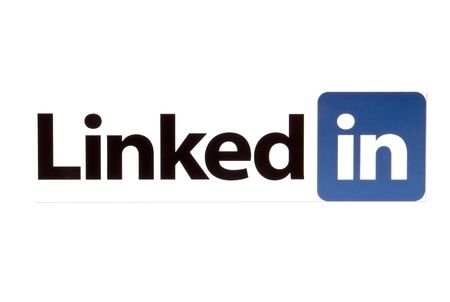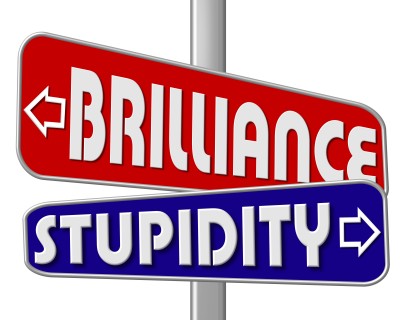How To Get Recruiters To Actually Read Your Resume
You may think that a recruiter or hiring manager will read your resume from top to bottom as soon as they receive it. They won’t.
You may also think that every, single, thing you’ve done over the last 20 years is important. It’s not.
Most readers will quickly scan your resume looking for information relevant to the job they are trying to fill. A first read generally lasts only a few minutes. If your resume is 3-5 pages, they may not review the entire document.
In most cases, only if a recruiter or hiring manager likes what they’ve found on the initial scan will they read the entire resume.
While there are mixed opinions on how long a resume should be – no one’s resume needs to be seven or eight pages. Yes, when I was working as a recruiter I saw them. I still see them today.
3 Reasons Recruiters Aren’t Calling You
As a businessperson, I go to a lot of networking events. Some, like SHRM, provide professional development. Often, I’m speaking at job seeker groups. Wherever the event, I always meet people who are looking for a new job.
Their most common complaint is not getting interviews.
Before becoming a resume writer, I worked as a recruiter. That means I reviewed countless resumes and spent hours on LinkedIn looking for candidates. That experience gives me some insight into why recruiters call some candidates but not others. Here are 3 reasons.
Protect Your LinkedIn Profile Today
When Microsoft purchased LinkedIn, everyone knew there would be changes. The end of last year, LinkedIn rolled out a big one. It’s called Resume Assistant.
According to LinkedIn, Resume Assistant provides samples from successful professionals that can be used as inspiration for members who want to update their resumes.
“Resume Assistant, provides real examples of how other professionals are describing their work experience — such as how they write their profile summary or explain responsibilities in their role — so you can highlight your skills in the right way to get the job you want.”
Read LinkedIn’s latest Resume Assistant promo here.
Essentially, it allows LinkedIn members access to the summaries, job descriptions, etc. of other members. Once the member provides their industry or target job title, Resume Assistant pulls what is called “insights” from other members’ profiles.
One problem is that it’s not opt-in, it’s opt-out. So, you profile can be accessed by Resume Assistant unless you change some of your settings.
Think A Little Negativity Won’t Hurt? Think Again.
Everyone expects to have recruiters and potential employers view their LinkedIn profile. But what you may not realize they are probably checking you out via a Google search as well.
In 2015, 52% of employers were investigating candidates online as part of the hiring process according to a CareerBuilder survey. Imagine what the percentage is today.
I’ve spoken to CEO’s who personally research every potential hire online before making an offer. So be sure to monitor your online presence. And be careful what you write and post online.
Avoid Sending Negative Emails
My grandmother used to say don’t put anything in writing that you wouldn’t want to read on the front page of the newspaper. Today, that goes for email as well because you can’t control who, besides the intended party, will read it.
Your email may be forwarded, intentionally or unintentionally, to someone you don’t want to see it. Maybe even your boss. Don’t expect any privacy at the office as your email is probably being monitored by your employer.
6 Common LinkedIn Profile Mistakes And How To Easily Fix Them
Today, the majority of recruiters use LinkedIn to source candidates for open positions. That means, every day countless numbers of recruiters are searching LinkedIn profiles. Many of them may be looking for someone just like you.
Unfortunately, most people set up their LinkedIn profile and promptly forget about it. They plan to go back and write the Summary or at least post some descriptions under the job titles. But, they never do.
Without a doubt, one of the most productive things you can do to move your job-search forward it to have robust LinkedIn profile. However, making a few easy updates will help you be found.
#1 Headline
Your LinkedIn headline is valuable real estate. Don’t settle for the default which is your current job title. Don’t waste it with phrases like “Looking for new opportunities.” Use it for something that recruiters will actually search for like your key skills or a branding statement.
How To Avoid Being Considered The Lazy Candidate
When I was recruiting, I always asked potential candidates if they were familiar with the company during my screening call.
The smart ones said, yes and went on to tell me what they knew.
The lazy ones said no.
Not a good sign.
When you’re competing for a job, one of the things many employers will ask is “why do you want to work here?”
If you don’t know anything about the company what can you say?
One of the keys to being successful during job interviews is to research companies in advance and prepare a few responses to questions like “what do you know about us?” and “how did you find this job?” and, the inevitable, “why do you want to work here?”
Imagine you’re interviewing with Amazon.
Since the company is a household name and you’ve probably shopped with them often, you might think you know a lot about the company. You might not bother to do your research.
Here’s why that would be a mistake on your part.
What Recruiters Can (And Cannot) Do For You
Many job seekers are under the misconception that recruiters are there to help them find a job. They aren’t. Whether they’re contingency, consultants or retained search, recruiters work for employers.
That doesn’t mean that they can’t help you find a new job.
It depends on what your goal is.
Based on my experience as a recruiter, recruiters are eager to help you when you’re easy to place.
A recruiter’s goal is to fill one or more open positions. If they are working contingency, they only get paid when a client hires one of their candidates. They may have to wait until the candidate is there 30-days to get paid.
While corporate recruiters are not on commission, they may be paid a bonus based on how many positions they fill. They will certainly be judged on the quality of candidates they present.
As I tell my clients, recruiters are looking for a round peg that will fit into the round hole they are trying to fill. If you’re a square peg they’re unlikely to spend much time with you.
How To Stand Out From Your Competition
If you’re planning to look for a new job in the next 6 months, it’s time to start working on your resume. Now. Whether you’ve decided to write it yourself or plan to hire a professional writer, it ALWAYS takes longer than you think it will.
Getting recruiters to notice you isn’t easy.
As a recruiter, most of the resumes I received were much like reverse-engineered job descriptions. A few years later, the resumes I review as a resume writer are much the same. Even the resumes of C-level executives.
Under each job title, there are long, bulleted lists of job duties and responsibilities. Boring. To get an employer’s attention include a brief overview of each position followed by 3 to 5 bullets that demonstrate value. These are things that stand out, things that had a direct impact on your team, department, maybe even the company.
Make sure to quantify your results whenever possible. You may think that saying you made millions of dollars for a company is impressive. But, it’s not. Employers want to see numbers. For example, the campaign you developed built your newsletter list by XX.
6 Point Executive Resume Checklist
You may have heard of Marshall Goldsmith’s bestselling book What Got You Here Won’t Get You There: How Successful People Become Even More Successful.
The truth is, it’s the same with resumes. The resume that generated interviews early in your career, won’t get you noticed once you reach the executive level.
The resume that listed your duties and responsibilities won’t impress recruiters and employers who are filling executive roles. Here is a 6 Point Checklist for developing an interview-generating, executive resume.
Avoid Inconsistencies That Can Scare Employers Away
One of the fastest ways to scare recruiters and hiring managers away is with inconsistencies. If you’re actively looking, your resume may be the first time a potential employer meets you. If your resume catches their interest, the next step will be to view your LinkedIn profile.
To avoid raising eyebrows, make sure they won’t find any surprises. Your LinkedIn profile and resume shouldn’t mirror each other word-for-word. But there shouldn’t be inconsistencies either.
Job Titles
Start by making sure the job titles on your resume and LinkedIn profile are the same. If you have an obscure or inaccurate job title, you may choose to include the actual job title and a more accurate title with it. For example, if your job title is Analyst II, but your position is more System Analyst, you use Analyst II (System Analyst).










